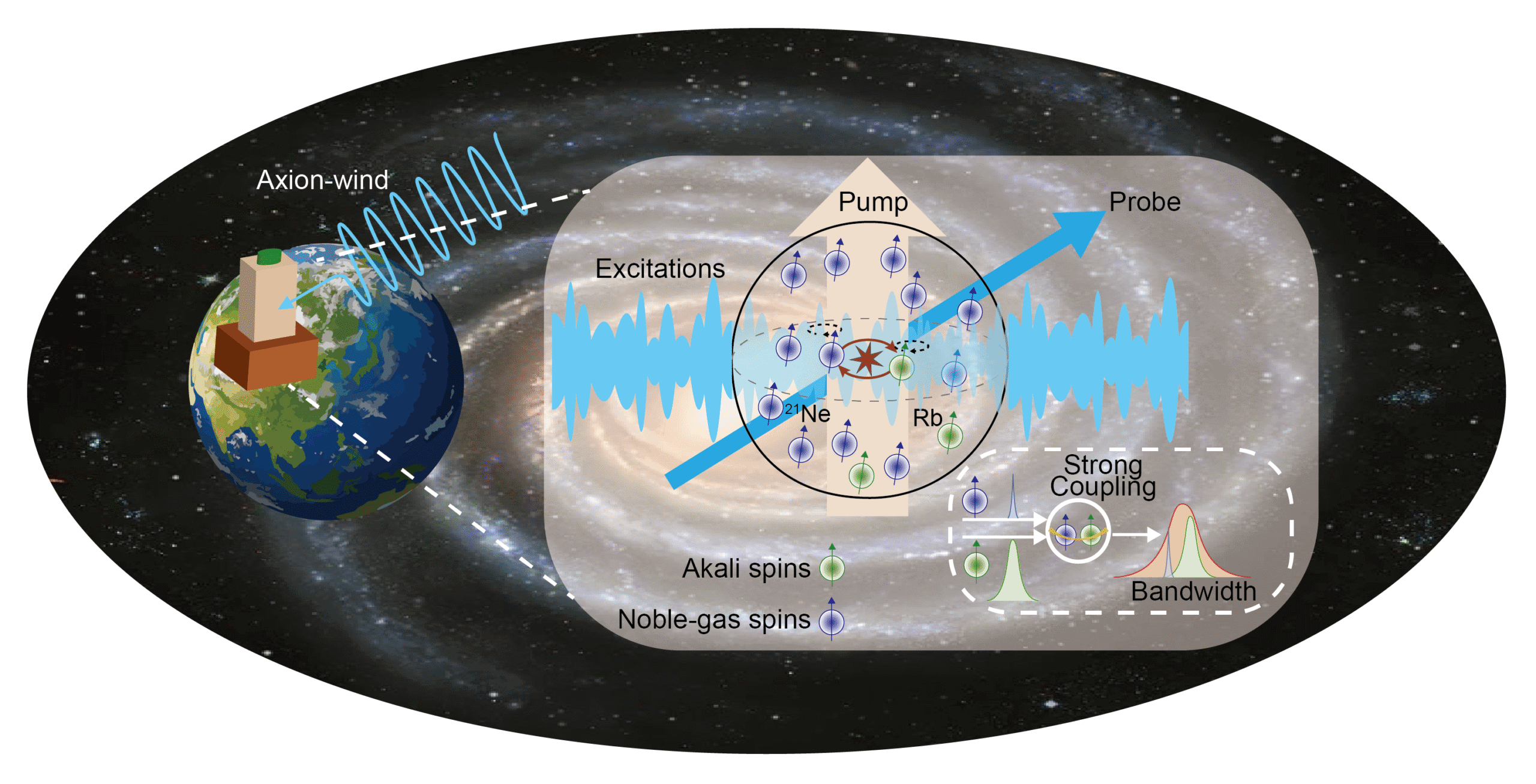By expanding the bandwidth of searches, scientists have taken a major step toward identifying the elusive particles that may make up over a quarter of the universe

Dark matter makes up over 25% of the universe’s mass, holds galaxies together, and is essential to our understanding of cosmic structure. It doesn’t interact with light or other electromagnetic radiation, and is detectable only through its gravitational effects. While astrophysical and cosmological evidence confirms its presence, its true nature remains one of the greatest mysteries in modern physics.
A leading theory suggests that dark matter consists of extremely light, elusive particles called axions. Traditional axion searches rely on narrow-band resonance techniques, which require slow, step-by-step scanning across possible axion masses, making the process time-consuming.
In this study, researchers introduce a new broadband quantum sensing approach using an alkali-21Ne spin system, which works like a very sensitive antenna to listen for signals from dark matter. They identify two distinct ways the system behaves under different conditions. At low frequencies, the spin system naturally adjusts itself to cancel out noise or unwanted effects. This self-compensation makes the system stable and sensitive, even without fine-tuning. It’s like a car that automatically balances itself on a bumpy road, you don’t need to steer constantly. At higher frequencies, the system enters a state where the spins of different atoms resonate together. This resonance boosts the signal, making it easier to detect tiny effects caused by dark matter. Like two musical instruments playing in harmony, the combined sound is louder and clearer. This allows researchers to significantly expand the search bandwidth without sacrificing sensitivity.

Their experiment covers a vast frequency range, from very slow oscillations (0.01 Hz) to very fast ones (1000 Hz), enabling a comprehensive search for axion-like dark matter. They set new constraints on how axions might interact with neutrons and protons. For neutrons, they reached a sensitivity that beats previous astrophysical limits in some frequency ranges. For protons, they achieved the best lab-based constraints in specific frequency bands.
This work not only advances the search for dark matter but also opens new frontiers in atomic physics, quantum sensing, and particle physics, offering a powerful new strategy to explore the invisible fabric of the universe.
Read the full article
Dark matter search with a resonantly-coupled hybrid spin system
Kai Wei et al 2025 Rep. Prog. Phys. 88 057801
Do you want to learn more about this topic?
Dark matter local density determination: recent observations and future prospects by Pablo F de Salas and A Widmark (2021)
